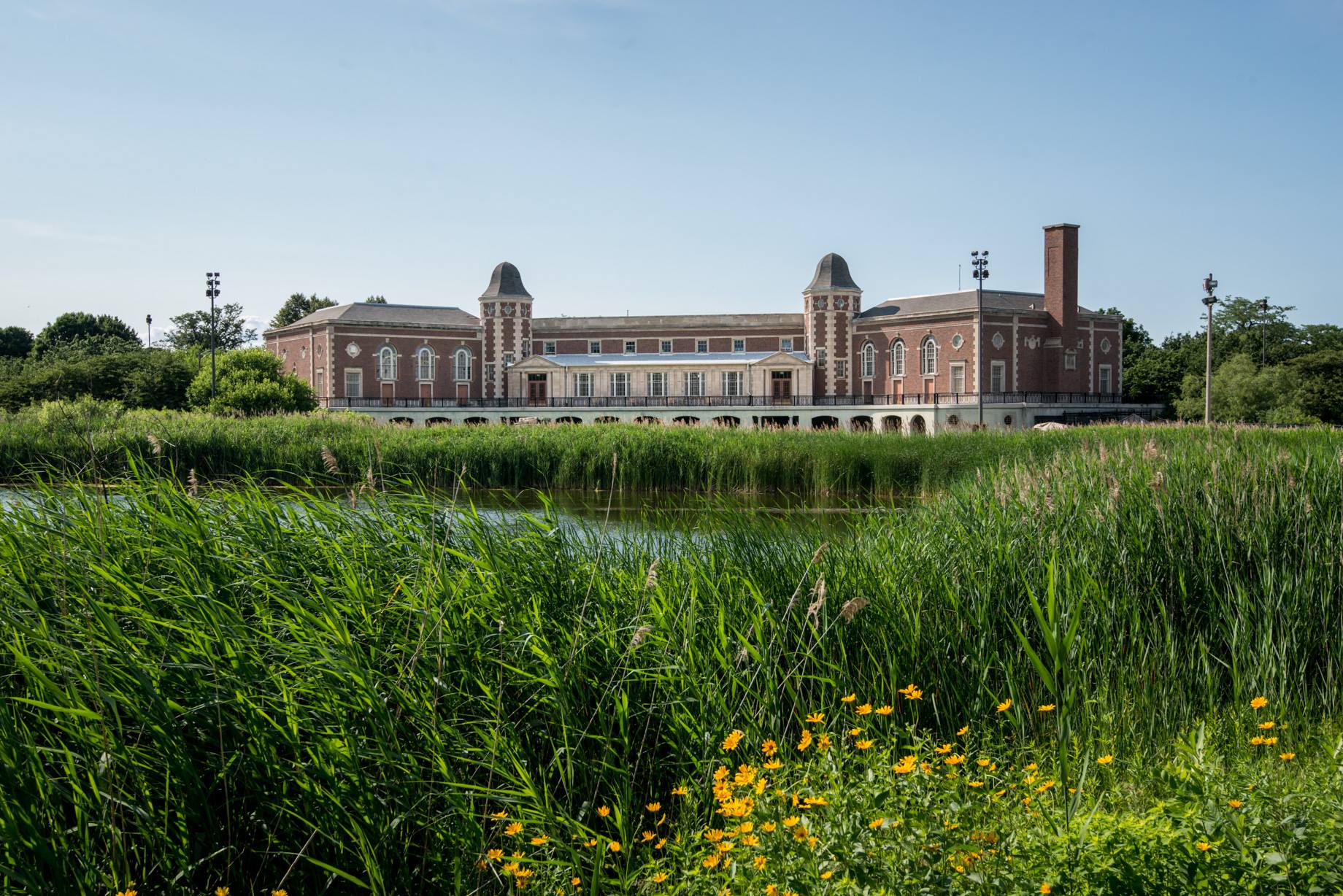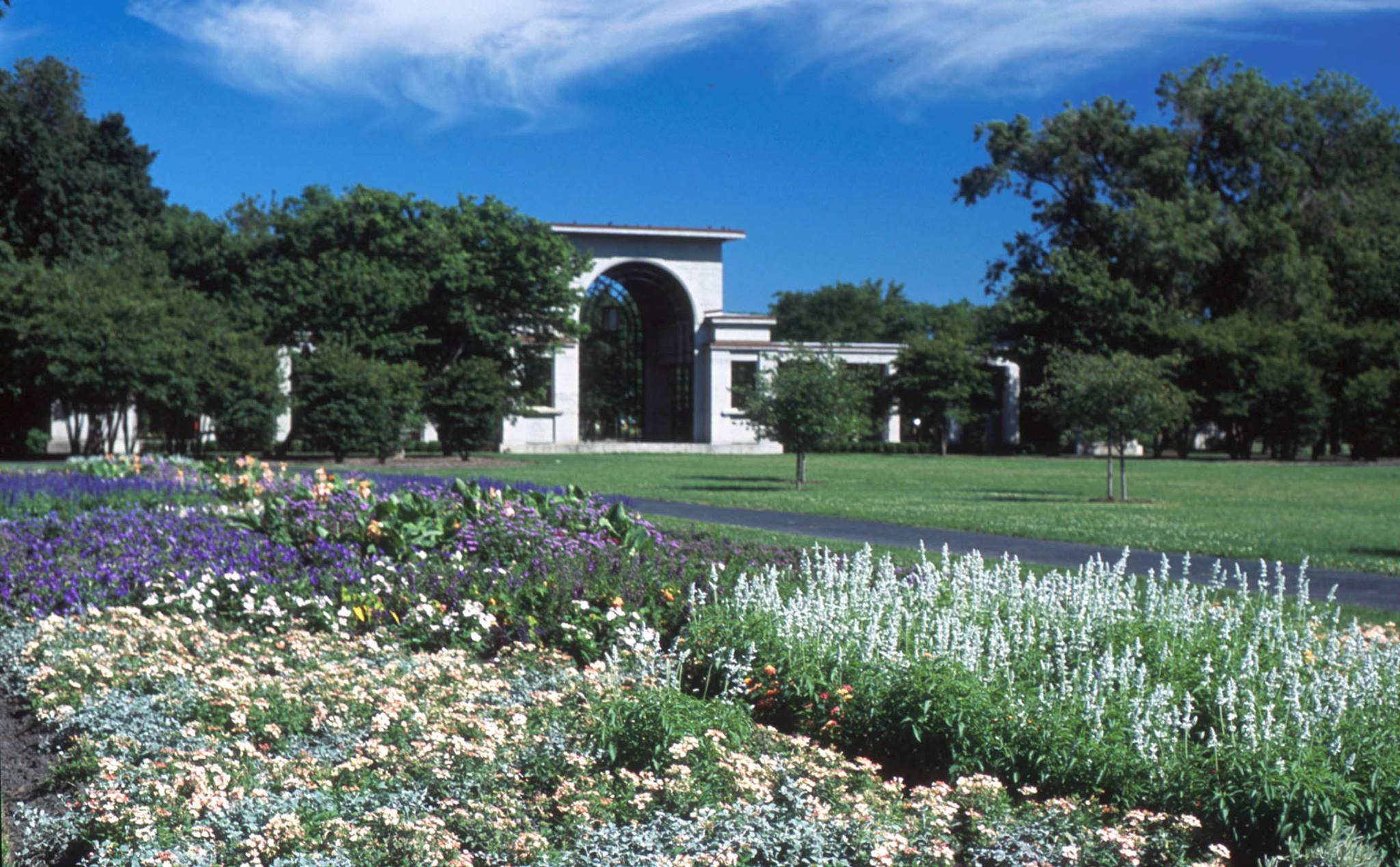Located in the North Lawndale community and parts of the area known as Pilsen, Douglas Park Cultural & Community Center totals 218 acres. Douglas Park is a historic regional park with features that include 2 gymnasiums, an auditorium, computer lab, fitness center, a kitchen, grand ball room, and meeting rooms. Outdoors, the park offers tennis courts, a game day football stadium, outdoor pool, water spray features, basketball courts, an artificial turf soccer field, a pavilion, baseball fields, and a small golf putting range. In collaboration with the Chicago Bulls Basketball organization the children’s computer learning lab serves the children of the community. In partnership, with Ravinia, the park is host to a series of summer concerts and the annual Junta Hispana festival in July.
Young park-goers can play seasonal sports at the facility or take a creative writing class. On the cultural side, Douglas Park offers dance, arts, performing arts and theatre. In the summer, youth attend day camp, and specialty arts camps.
Adults participate in a range of activities, including working out at the fitness center, aerobics and conditioning. Families can also participate in the monthly “Bring the Family to the Table” free nutritional meal offered in partnership with the Greater Chicago Food Depository
In addition to programs, Douglas Park hosts fun special events for the whole family, such as Movies in the Park.
History
In 1869, the Illinois state legislature established the West Park Commission, which was responsible for three large parks and interlinking boulevards. Later that year, the commissioners named the southernmost park in honor of Stephen A. Douglas (1813-1861). Best remembered for his pre-Civil War presidential defeat by Abraham Lincoln despite superb oratorical skills, Douglas was a United States Senator who helped bring the Illinois Central Railroad to Chicago. In 1871, designer William Le Baron Jenney completed plans for the entire West Park System which included Douglas, Garfield, and Humboldt parks. Jenney’s engineering expertise was especially helpful for transforming Douglas Park’s poor natural site into parkland. He had sand and manure from the Chicago Stock Yards added to the marshy site. In the center of the landscape, Jenney created a picturesque lake. A small section of the park was formally opened in 1879. In 1895, members of several German turners’ clubs petitioned for an outdoor gymnasium in Douglas Park. The following year, this resulted in the construction of one of Chicago’s first public facilities with outdoor gymnasium, swimming pool, and natatorium.By the turn of the century, the West Park Commission was riddled with political graft, and the three parks became dilapidated. As part of a reform effort in 1905, Jens Jensen was appointed as General Superintendent and Chief Landscape Architect for the entire West Park System. Jensen, now recognized as Dean of the Prairie style of landscape architecture, improved deteriorating sections of the parks and added new features. Among Jensen’s improvements were a semi-circular entryway at Marshall Blvd., and a formal garden at the corner of Ogden Ave. and Sacremento Dr. By the time Jensen designed the garden, Ogden Avenue, a diagonal roadway with a major streetcar thoroughfare, had already been constructed. The road divided the park into two separate landscapes, creating a busy intersection at the juncture of Ogden and Sacramento Avenues. Jensen’s solution was a long axial garden on the southeast side of the intersection, providing a buffer between Ogden Ave. and playfields to the south.
At the entrance to the garden, the area closest to the busy roadway intersection, Jensen placed a monumental garden shelter, known as Flower Hall, and a formal reflecting pool. The designer of the structure is unknown, however, it was possibly Jensen himself, or his friend, Prairie School architect Hugh Garden. East of the building, the garden becomes more naturalistic. Jensen included perennial beds, a lily pool, and unique Prairie-style benches. In 1928, the West Park Commission contructed a fieldhouse in Douglas Park. The structure was designed by architects Michaelsen and Rognstad, who were also responsible for other notable buildings including the Garfield Park Gold Dome Building, the Humboldt and LaFolette Park Fieldhouses, and the On Leong Chinese Merchant’s Association Building in Chinatown. In 1934, Douglas Park became part of the Chicago Park District, when the city’s 22 independent park commissions merged into a single citywide agency.
Parking/Directions
For directions using public transportation visit www.transitchicago.com.No Records Found
Sorry, no records were found. Please adjust your search criteria and try again.
Google Map Not Loaded
Sorry, unable to load Google Maps API.
- Save as a Fave!

